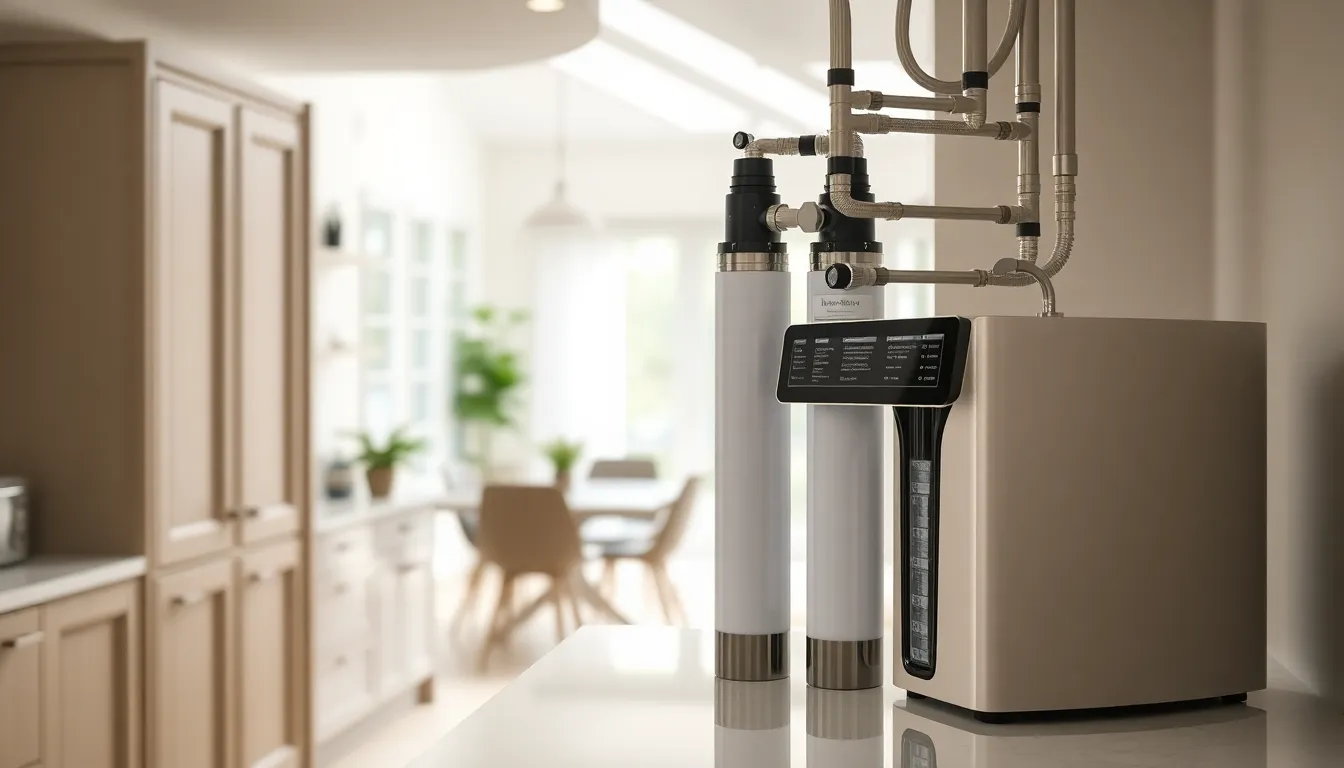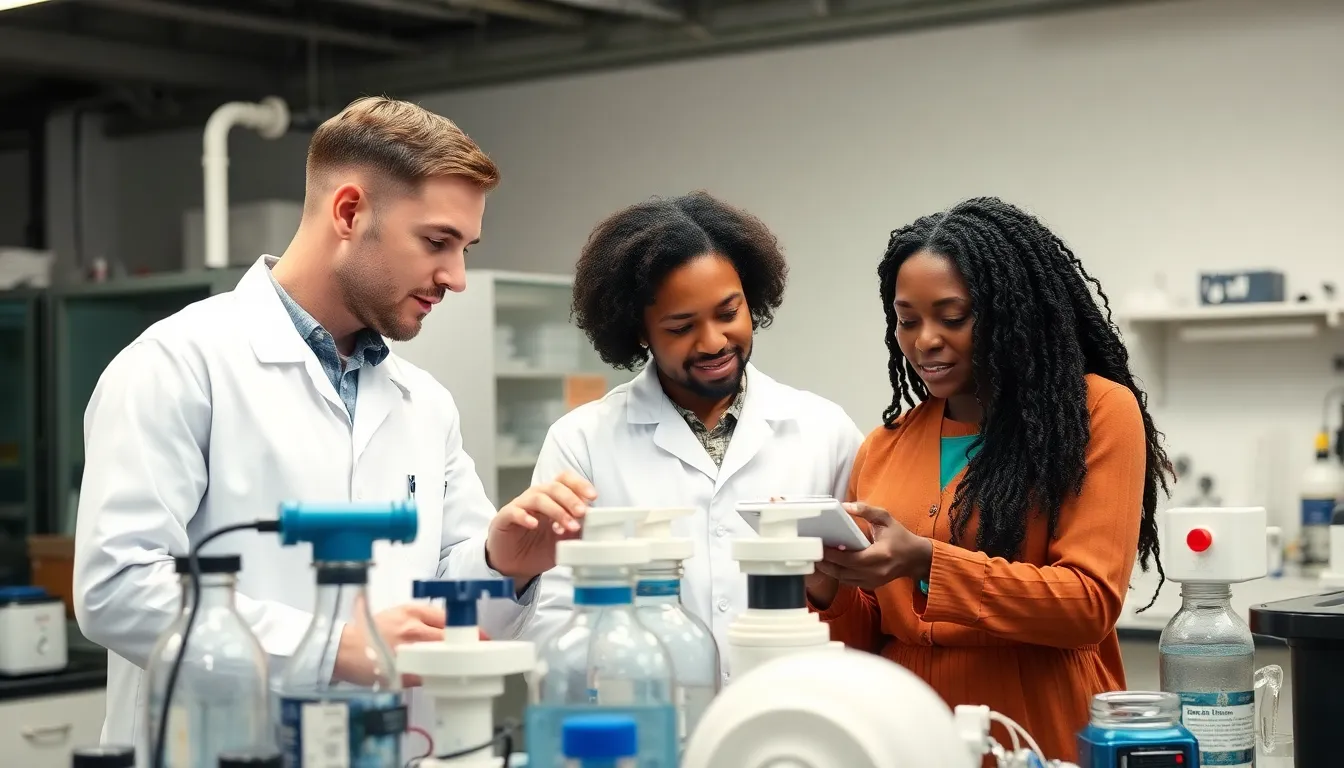In a world where bottled water seems to be more popular than tap, the quest for clean water technology has never been more crucial. Imagine a future where everyone has access to pure, refreshing water straight from the tap—no more dodging suspicious-looking puddles or debating if that stream is safe for a quick sip. Clean water technology is not just a luxury; it’s a necessity that could transform lives and save the planet.
Table of Contents
ToggleOverview of Clean Water Technology
Clean water technology encompasses various methods and systems aimed at providing safe drinking water. This technology addresses challenges like contamination and scarcity, ensuring everyone has access to quality water. Innovative solutions range from advanced filtration systems to smart water monitoring tools.
Filtration systems play a crucial role in removing impurities. Technologies like reverse osmosis and UV disinfection efficiently eliminate pathogens and pollutants. These systems significantly reduce the risk of waterborne diseases, promoting public health.
Smart monitoring tools enhance water quality management. Sensors integrated into water supply networks continuously track parameters, such as turbidity and bacterial presence. Early detection of contamination allows for quick responses to potential health threats.
Rainwater harvesting systems offer sustainable alternatives. Collecting and storing rainwater for reuse can supplement traditional water sources. This practice reduces reliance on municipal supplies and promotes conservation in water-scarce areas.
Desalination plants provide solutions for regions with limited freshwater resources. By converting seawater into potable water, desalination expands access to clean water. These plants increase the availability of safe drinking water in coastal communities.
Wastewater treatment technologies recover resources. Advanced methods like membrane bioreactors treat wastewater for reuse in irrigation or industrial processes. This approach not only conserves freshwater but also protects local ecosystems.
Innovations in clean water technology continue to evolve. Researchers are exploring new materials and methods to further improve water purification efficiency. Each breakthrough contributes to the global goal of providing clean, accessible water for all.
Types of Clean Water Technology

Clean water technology encompasses various methods that ensure safe drinking water. These technologies tackle contamination and scarcity, making pure water accessible to all.
Advanced Filtration Systems
Advanced filtration systems effectively remove impurities from water. These systems utilize multiple layers of filters, capturing particles and contaminants. Microfiltration, ultrafiltration, and nanofiltration are common techniques in this category. Each method targets specific pollutants, improving water safety. Installation of these systems in households or communities boosts public health.
Reverse Osmosis Solutions
Reverse osmosis solutions are popular in clean water technology for their efficiency. This process forces water through a semipermeable membrane, removing dissolved solids and various contaminants. Often used in residential settings, reverse osmosis systems contribute to better taste and odor in drinking water. Regular maintenance of these systems ensures they function optimally. Implementing such solutions plays a crucial role in areas facing high contamination levels.
UV Water Purification
UV water purification utilizes ultraviolet light to eliminate harmful microorganisms. This method disinfects water without chemicals, maintaining its quality. Exposure to UV light successfully inactivates bacteria, viruses, and protozoa. Deploying UV systems in both residential and commercial applications enhances water safety. Such technology requires minimal maintenance and operates efficiently, reinforcing its appeal in water treatment strategies.
Benefits of Clean Water Technology
Clean water technology offers significant advantages for health and the environment. Access to safe drinking water contributes to enhanced overall well-being and ecological protection.
Health Improvements
Improved water quality reduces the risk of waterborne diseases. Individuals in areas utilizing advanced filtration systems experience fewer gastrointestinal illnesses. Technologies like reverse osmosis eliminate harmful contaminants, thereby promoting public health. Regular monitoring of water quality ensures prompt detection of pollutants and contaminants, further safeguarding health. Communities utilizing UV purification methods witness a decline in illness rates, as these systems effectively inactivate bacteria and viruses. Integration of these technologies into daily life results in a healthier population, reflecting a direct correlation between clean water access and improved health outcomes.
Environmental Impact
Utilizing clean water technology significantly reduces environmental pollution. Advanced wastewater treatment systems allow for the safe recycling of water, minimizing waste and conserving resources. Rainwater harvesting practices promote sustainable water management, decreasing reliance on conventional water sources. Desalination processes provide fresh water while reducing the environmental strain on aquifers. Implementing smart water monitoring tools aids in the early detection of leaks and contamination, minimizing water waste. These actions collectively foster a healthier ecosystem, showcasing the positive environmental outcomes associated with clean water technology advancements.
Challenges in Implementing Clean Water Technology
Clean water technology faces several challenges that impact its effectiveness and deployment. Understanding these obstacles is crucial for advancing solutions and maintaining sustainable water sources.
Cost Considerations
High costs often hinder the adoption of clean water technology. Initial investment in advanced filtration systems and monitoring tools can be substantial. Budget limitations frequently affect community programs and infrastructure projects. Long-term savings are possible, but financial barriers often obstruct immediate implementation. Increased city or state funding can facilitate the expansion of affordable technologies. Users also need to consider ongoing operational expenses for maintenance and repairs. Delivering affordable clean water solutions remains a priority for many governments.
Accessibility Issues
Accessibility remains a significant challenge in implementing clean water technology. Many rural and underserved communities lack infrastructure to support advanced systems. Geographic barriers further complicate the delivery of essential services. When resources are scarce, communities may not prioritize clean water access. Equity in distribution is essential to ensure all populations benefit from new technologies. Public awareness campaigns can drive demand, encouraging investment in viable solutions. Flexible policies can enable a broader reach for clean water initiatives.
Future Trends in Clean Water Technology
Innovations in clean water technology focus on enhancing accessibility and safety. Emerging technologies include solar-powered water purification systems. These systems harness renewable energy, making clean water accessible in remote areas. Data analytics plays a vital role in monitoring water quality. Real-time data collection improves responsiveness to contamination events.
New advancements in membrane filtration offer improved efficiency in desalination processes. Membrane technology reduces energy consumption while producing potable water from seawater. Research into bioremediation utilizes microorganisms to eliminate contaminants, providing an eco-friendly solution. Other innovative strategies involve integrating the Internet of Things (IoT) into water management systems. Such integration enables smart water usage, optimizing distribution networks and minimizing waste.
Advancements in nanotechnology are set to revolutionize filtration systems. Enhanced materials can capture smaller particles and pathogens effectively. Investment in residential greywater recycling systems promotes water conservation in urban settings. These systems allow households to reuse water from sinks and showers, reducing overall demand on potable supplies.
Collaborative efforts among governmental and non-governmental organizations aim to improve infrastructure in underserved communities. Innovative financing models, including public-private partnerships, facilitate the deployment of clean water solutions. Increased focus on environmental sustainability encourages the development of eco-friendly water treatments.
Emerging trends indicate a shift toward community-led initiatives that advocate for local solutions. This approach empowers populations to address their unique water challenges. By prioritizing education and awareness, communities can make informed decisions regarding their water resources. The future of clean water technology hinges on these collaborative endeavors and innovative solutions.
Clean water technology stands at the forefront of ensuring safe drinking water for all. Its innovative solutions not only address contamination and scarcity but also promote public health and environmental sustainability. As advancements continue to emerge, the integration of smart monitoring tools and renewable energy sources will further enhance accessibility.
Overcoming challenges like high costs and infrastructure gaps is crucial for widespread adoption. Community engagement and education play vital roles in fostering demand for these technologies. A collaborative approach will pave the way for a future where everyone can enjoy the benefits of clean water directly from their taps. The journey towards universal access to safe water is ongoing and requires commitment from all sectors of society.

